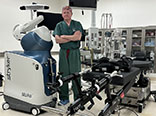Your Rights and Protections Against Surprise Medical Bills and Balance Billing.
When you get emergency care or get treated by an out-of-network provider at an in-network hospital or ambulatory surgical center, you are protected from surprise billing or balance billing.
What is “balance billing” (sometimes called “surprise billing”)?
When you see a doctor or other health care provider, you may owe certain out-of-pocket costs, such as a copayment, coinsurance, and /or a deductible. You may have other costs or have to pay the entire bill if you see a provider or visit a health are facility that isn’t in your health plan’s network.
“Out-of-network” describes providers and facilities that haven’t signed a contract with our health plan. Out-of-network providers may be permitted to bill you for he difference between what our plan agreed to pay, and he full amount of charges for that service. This is called “balance billing.” This amount is likely more that in-network costs for the same service and might not count toward you annual out-of- pocket limit.
“Surprise billing” is an unexpected balance bill. This can happen when you can’t control who is involved in our care—like when you have an emergency or when you schedule a visit at an in-network facility but are unexpectedly treated by an out-of-network provider.
Insurers are required to tell you, via their websites or on request, which providers, hospitals, and facilities are in their networks. Hospitals surgery centers, and providers must tell you which provider networks they participate in on their webize or on request.
You are protected from balance billing for:
Emergency Services
If you have an emergency medical condition, mental health or substance use disorder condition and get emergency services from an out-of-network provider or facility, the most the provider or facility ma bill you is your plan’s in-network cost-sharing amount (such as copayments and coinsurance). You can’t be balance billed for these emergency services. This includes care you receive in a hospital and in facilities hat provides crisis services to people experiencing a mental health or substance use disorder emergency. You can’t be balanced billed for these emergency services, including services you may get after you’re in stable condition.
Certain services at an in-network hospital or ambulatory surgical center
When you get services from an in-network hospital or ambulatory surgical center, certain providers there may be out-of-network. In these cases, the most these providers may bill you is your plan’s in-network co-sharing amount.
You also are not required to get care out-of-network. You can choose a provider or facility in your plan’s network.
When can you be asked to waive your protections from balance billing.
Health care providers, including hospitals and air ambulance providers, can never require you to give up your protections form balance billing.
If you have coverage through a self-funded group health plan, in some limited situations, a provider can ask you to waive your balance billing protections, but you are never required to give your consent. Please contact your employer or health plan for more information.
When balance billing isn’t allowed, you also have the following protections:
You are only responsible for paying your share of the costs (like the copayment, coinsurance, and deductibles that you would pay if the provider or facility was in-network). Your health plan will pay out-of-network providers and facilities directly.
Your health plan generally must:
- Cover emergency services without requiring you to get approval for services in advance (prior authorization).
- Cover emergency services by out-of-network providers.
- Base what you owe the provider or facility (cost-sharing) on what it would pay an in-network provider or facility and show that amount in your explanation of benefits.
- Count any amount you pay for emergency services toward your deductible and out-of-pocket limit.
If you believe you have been wrongly billed, you may file a complaint with the federal government at https://www.cms.gov/nosurprises/consumers or by calling 1-800-985-3059. Visit https://wwwlcms.gov/nosurprises for more information about your rights under federal law.
Good Faith Estimates to the Uninsured /Self Pay
Good Faith Estimate of the expected charges – to new patients and continuing patients – who either don’t have insurance or are not planning to submit a claim for payment to their insurance carrier. The No Surprise Act has specific rules for what information the estimate must provide and the timeline for providing the estimate. Healthcare providers must provide self-insured patients and self-pay patients of their “right” to receive the Good Faith Estimate.
An uninsured patient is an individual who does not have benefits for an item or served under a group health plan; whereas a self-pay patient is an individual who has benefits under a group health plan but chooses not to have a claim submitted to their plan. The good faith estimate presented to an uninsured or self-pay patient must include services reasonable expected to be provided by the facility.
The Good Faith estimates do not apply if the patient is using Medicare, Medicaid, or another federal healthcare program (such as TRICARE). A Good Faith Estimate is not required for emergency services which, by definition, cannot be scheduled in advance.
10 Most Commonly Performed Services
(Published 01/31/2023)
Per Alaska state law (Senate Bill 105, 2018), in effect on 1/31/2019, The Surgery Center of Fairbanks and other providers are required to annually post a list of the top 10 most frequently billed service codes from the six sections of the Category 1 of the Current Procedure Terminology (CPT®)1 code book, as adopted by the American Medical Association.
The six sections are as follows:
| Category | CPT Code Range |
|---|---|
| Evaluation and Management | 99201-99499 |
| Anesthesia | 00100-01999; 99100-99140 |
| Surgery | 10021-69990 |
| Radiology | 70010-79999 |
| Pathology and Laboratory | 80047-89398 |
| Medicine | 90281-99199; 99500-99607 |
The State department responsible for overseeing this law is the State of Alaska Department of Health and Social Services (DHSS).
The Surgery Center of Fairbanks is listing our undiscounted prices taken directly from our fee sheet. These prices may be higher or lower than the amount actually paid for the services received depending on the individual’s circumstance (i.e., insurance coverage, in-network contracts).
You are entitled to receive a good faith estimate of reasonably anticipated charges for any non-emergency services prior to being provided those services within 10 days of your request. This estimate does not include facility fees or other charges incurred outside the service rendered by The Surgery Center of Fairbanks. This estimate will be provided in the form of your choosing: orally, written, or electronically. Please do not hesitate to ask any questions.
We are an in-network provider for Aetna and Premera Blue Cross (Alaska/Washington/Federal) and First Choice Health. We also accept Medicare, Medicaid, and Denali Kid Care, TriWest, TriCare and VA. For all other insurances, we are considered out of network and do not maintain contractual relationships that may reduce the price of our services.
10 Most Commonly-Performed Surgery Codes
Unadjusted Cost in $ (not including in-network/negotiated discounts)
| CPT Code | Description of Service | Cost |
|---|---|---|
| 23120 | Partial removal of the collar bone. | 12,420 |
| 23430 | Anchoring or repair of biceps tendon. | 10,160 |
| 30140 | Excision or resection of the nasal turbinate to improve breathing. | 6,785 |
| 23130 | Excision procedures of the shoulder. | 13,545 |
| 26055 | Incision of tendon covering. | 8,565 |
| 23410 | Repair of torn shoulder tendons. | 11,290 |
| 29881 | Arthroscopy of the knee. | 8,505 |
| 29879 | Arthroscopy of the knee with cartilage repair. | 8,505 |
| 29826 | Endoscopy shaving of the shoulder. | 9,275 |
| 29822 | Arthroscopic removal of 1-2 structures in the shoulder | 9,275 |
| 45385 | Colonoscopy – exam of the colon with an endoscope | 2,665 |
10 Most Commonly Billed Evaluation and Management Codes
We do not bill Evaluation and Management Codes
10 Most Commonly Billed Anesthesia Codes
We do not bill Anesthesia Codes
10 Most Commonly Billed Radiology Codes
We do not bill Radiology Codes
10 Most Commonly Billed Pathology and Laboratory Codes
We do not bill Radiology Codes
10 Most Commonly Billed Medicine Codes
We do not bill Medicine Codes
1 CPT © 2023, American Medical Association. All rights reserved. CPT is a registered trademark of the American Medical Association. The CPT codes are provided “as is” without warranty of any kind. The AMA specifically disclaims all liability for use or accuracy of any CPT codes.





